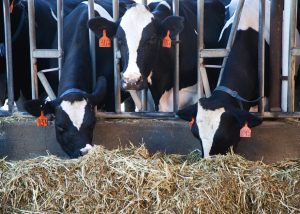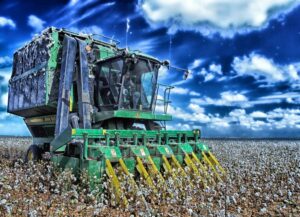Álvaro García
With feed costs rising and milk prices becoming increasingly dependent on fat and protein content, many dairy producers are asking an important question: Is it worth testing milk components on the farm? Component-based milk pricing is now the standard in many parts of the U.S., where checks are written not just for pounds of milk but for the value of what is in it. Fat and protein drive most of that value. Yet most producers still rely solely on bulk tank results from the plant, which may not reflect what is happening at the individual cow or pen level. On-farm testing provides a clearer picture and offers several benefits that justify that investment.
First, advancements in genomic testing now make it possible to match cows’ genetic potential for milk components with their actual performance. When you know which cows are underperforming their potential, or exceeding it, you can make smarter decisions about culling, breeding, and grouping. You can also evaluate whether your nutrition program is supporting that genetic potential or holding it back.
Second, on-farm component testing offers a way to double-check the accuracy of milk plant reports, which may occasionally vary due to sampling, equipment calibration, or transportation factors. Confirming your own numbers can give you peace of mind or flag a problem before it affects your milk check.
Third, regular monitoring of fat and protein can help fine-tune your feeding strategy. Are you seeing milk fat depression in one group? Is protein falling off in late lactation cows? Testing on the farm allows you to detect these shifts quickly and respond with targeted nutritional adjustments before they impact production or revenue. It also gives you a direct line of feedback to your nutritionist, since what you are feeding is only as good as the results it produces.
Whether you are troubleshooting a herd-wide issue, validating plant reports, or refining genetic and nutritional strategies, on-farm component testing is becoming a management tool. The rest of this article explores how to use it, what it costs, and how much it might return in improved performance and income over feed cost.
Available technologies for milk component testing
Dairy producers now have a range of tools for testing milk components right on the farm. These technologies vary in price, complexity, and precision. The best option depends on herd size, budget, and how detailed the information needs to be.
At the most affordable end are handheld infrared milk testers like the Milk Checker or Lactoscan MCC, typically costing between $2,000 and $5,000 USD. They provide quick readings for fat, protein, and sometimes lactose using small milk samples. While they require manual sampling and cleaning, they are easy to use and deliver results in just a minute or two. These devices are especially popular in Eastern Europe and are slowly gaining ground in U.S. small to mid-size farms. However, their accuracy can be variable, so they are better suited for spot-checking than full herd analysis.
A step up in both precision and investment are benchtop analyzers such as Lactoscan SA or MilkoScan FT1, which range from $10,000 to $30,000 USD. These machines offer high-resolution results for fat, protein, lactose, solids, and even freezing point. Not portable, these analyzers are ideal for farms with dedicated lab space and are commonly used in EU milk labs as well as on larger U.S. dairies with in-house testing systems.
In-line milk analyzers represent a fully automated option, integrated into the milking system itself. Brands like DeLaval Herd Navigator, Lely MQC-C, and Afimilk MPC continuously monitor each cow’s milk for fat, protein, lactose, somatic cell count, and ketones. Once installed, they require little labor and offer real-time insights linked to herd management software. However, installation costs range from $50,000 to $150,000 USD, making them more practical for robotic or rotary parlors. These systems are well established in countries like the Netherlands and Denmark, with adoption growing slowly in advanced U.S. operations.
The DeLaval Herd Navigator results are typically not read directly from the analyzer itself. Instead, the system sends data, such as fat, protein, lactose, and other component measurements, to a central herd management software platform on a computer or mobile device. Here is how it works:
- Inline Sensor Location: The actual sensors are usually located inside the milking system (often in the milk line or receiver jar).
- Data Transmission: As each cow is milked, the analyzer measures the milk composition in real-time.
- Result Display: The data is then displayed through DeLaval’s DelPro software, which producers can view in the parlor office, on a tablet, or remotely via the cloud. So, while the equipment collects and transmits the data, you read the results from the connected software, not from a screen on the unit itself.
Another high-end option is portable lab kits using mid-infrared spectroscopy, which cost between $25,000 and $60,000 USD. While not as automated as in-line systems, they deliver lab-quality results for fat, protein, urea, and even milk fatty acid profiles. These kits are used by consultants, and are more common in the EU, where on-farm labs are increasingly integrated into herd decision-making.
Finally, wearable sensors and predictive software are an emerging option. These tools do not directly measure components but use algorithms to predict shifts in milk fat or protein based on data from activity monitors, intake levels, or rumination. These systems are non-invasive and blend into existing cow monitoring platforms. They are now emerging on progressive farms in the EU and North America that already use cow-monitoring systems like SCR or Nedap (a Dutch company that tracks activity, rumination, and feeding behavior).
Is it worth the investment?
Investing in milk component testing equipment may seem like a big commitment, but for many dairies, the long-term return can outweigh the upfront cost, especially when milk is paid by components or when feed efficiency and animal health are tightly managed.
Fat and protein are the most valuable parts of milk. If you are paid on components, knowing which cows are underperforming (despite eating the same or more) lets you adjust diets, group animals differently, or make better culling decisions. Even a 0.1 percentage point increase in milk fat across a herd can translate to thousands of dollars per month depending on herd size and milk price.
Milk protein and fat respond quickly to ration changes. With real-time or frequent testing, you can fine-tune diets instead of waiting weeks for processor reports. If cows are dropping in butterfat or milk urea nitrogen, you can adjust fiber, starch, or protein levels sooner and avoid costly over- or underfeeding.
Payoff: Preventing just one case of subacute ruminal acidosis per 10 cows by detecting low butterfat early can save $250 to $500 in lost milk and health costs.
In addition, dairy farmers sometimes question the consistency of processor lab results. On-farm testing provides a second data point, especially helpful when troubleshooting inconsistencies or when there is a payment penalty at stake. If you are penalized for low components or butterfat inversions, on-farm tools help you confirm if it is an actual feeding issue or sampling error.
Component data collected at the individual cow level can also help identify superior cows for reproduction or culling decisions. When used with genomic evaluations, this allows you to build a more efficient herd that not only produces more but does so on less feed.
Finally, sudden drops in milk fat or protein can signal metabolic stress, acidosis, ketosis, or feed intake problems. On-farm testing helps catch these changes before visible symptoms appear, allowing faster intervention.
A tool that pays for itself
On-farm testing for milk components is no longer just for large dairies. With the growing emphasis on feed efficiency, milk pricing based on fat and protein, and the need for fast decision-making, these tools can pay for themselves quickly when used strategically. Whether it is detecting an early drop, verifying processor tests, or pinpointing cows that convert feed into components more efficiently, the benefits go beyond just numbers on paper. They show up in your milk check, your feed bill, and your long-term herd improvement.
If your dairy is already tracking individual performance, grouping cows, or making ration adjustments based on minor changes, on-farm component testing could be the missing piece that makes those decisions faster, smarter, and more profitable. As with any tool, the return depends on how you use it, but for many farms, it is becoming essential for management.
© 2025 Dellait Knowledge Center. All Rights Reserved.









